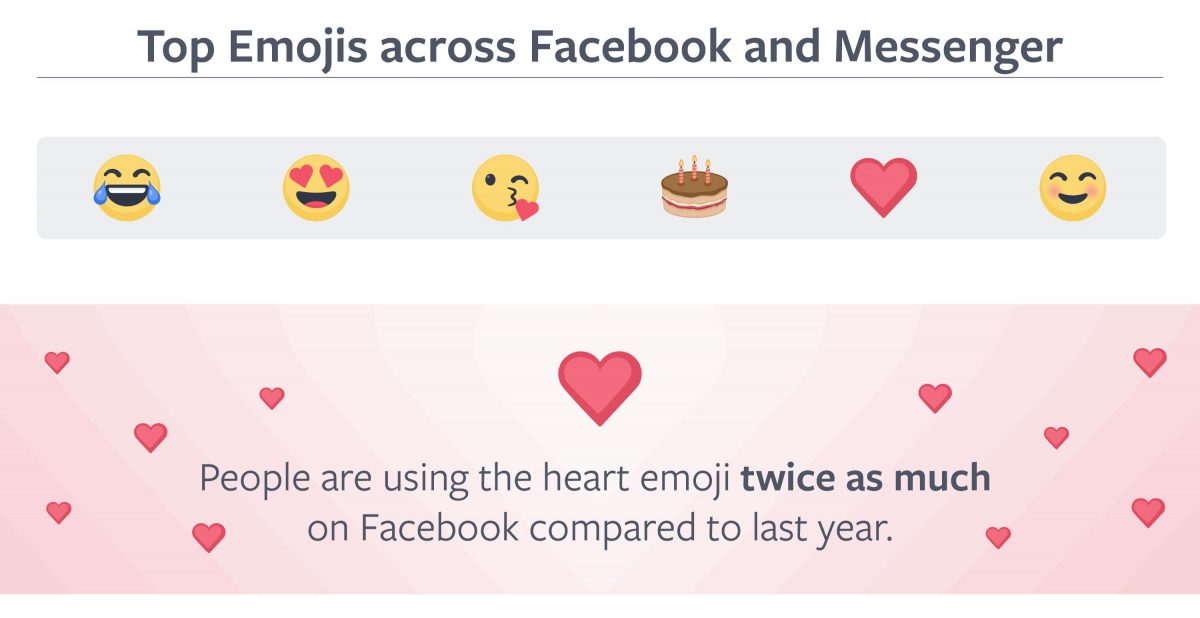
Emoji! These little symbols are exploding in number and placement in our digital lives. Wired called them “the first language born of the digital world.”
In 2015, Oxford Dictionaries named emoji as its “Word” of the Year, when they moved beyond millennial messaging and exploded into the global mainstream.
Today, emoji have made their way into almost all forms of digital communication, and beyond. There was The Emoji Movie, countless examples of people trying to imitate emoji, and earlier this year, ESPN Brazil, in partnership with Samsung, turned its SportsCenter hosts into emoji.

There’s even a World Emoji Day – July 17. Here’s how a few nonprofits cleverly celebrated:
Happy #WorldEmojiDay! Even though there’s no library emoji (yet), we’re still celebrating. How would you express the idea of a library using only emoji? #LibrariesTransform pic.twitter.com/6XvdXXmmqj
— American Library Association (@ALALibrary) July 17, 2018
#ForEveryChild, ?.#WorldEmojiDay pic.twitter.com/wKOFTAM7wz
— UNICEF (@UNICEF) July 17, 2018
Here are some of the species we’re fighting to save from extinction:
??????????????
Without the Endangered Species Act, these species will be in deep ???#esaworks #WorldEmojiDay
— Center for Bio Div (@CenterForBioDiv) July 17, 2018
A #HabitatforHumanity emoji story:
?????????????????#WorldEmojiDay! ??— Habitat for Humanity (@Habitat_org) July 17, 2018
But these tiny, emotive characters are more than fun and cute. They can be effective marketing tools for nonprofits.
The Potential Energy of Emoji is Enormous
Emoji can get more emails opened, make messages more memorable, and boost engagement. They save space, convey emotion and, for now, stand out in crowded inboxes and feeds.
Here’s some stats of emoji’s potential in digital marketing:
- EMAIL: When used appropriately, emoji can help trigger higher response rates than traditional email
- TWITTER: Emojis in a tweet can increase engagement by 25.4 percent
- FACEBOOK: Emojis in a Facebook post can increase the number of likes by 57 percent and the number of comments and shares by 33 percent
- INSTAGRAM: Use of Emojis can lead to 47.7 percent more interactions on Instagram
- APPS: Push notifications with emojis saw 85 percent greater open rates on average, compared to those sent without emojis
- TEXT: Text messages with emojis have a higher response rate
- MEMORY: Participants who were sent messages with emojis scored higher on memory than those who were sent messages without emojis
- SATISFACTION: Participants who chatted online with an expert who used emojis rated the expert as both friendlier and more competent
OK, that’s the potential.
Reality Check
Now let’s talk reality. Like any tactic or tool, emoji are not marketing fairy dust. As of June 2018, there are 2,823 standard emoji to choose from (with more coming every year), and not all of them are going to work for your people.
You still have to know your audience and use the tool wisely.
Before we dive into tips, you should know:

Top Emoji on Apple iOS (in the U.S. among English speakers):

On Twitter (August snapshot via Emojitracker.com):
![]()
Tips For Using Emoji In Your Nonprofit Marketing
Find Emoji on Emojipedia
This is my go-to resource for finding and copying emoji for digital communications on my laptop. For mobile, if an emoji keyboard isn’t standard, you may have to install an app, depending on your device.
Make Sure It Works
Not all emoji show up properly in email clients. Test to make sure your emoji display properly in email.
Know Your Tone
Just because an emoji is popular, doesn’t mean it’s right for your cause. You still need to be relevant to your audience, and your audience has to understand what the emoji means.
Emoji can be emotional, or simply informational. They can be culturally diverse, with different skin tones, hair colors (and no hair) and genders. Spend some time researching options. You can search a particular emoji on Twitter, Facebook and Instagram to see how others have used it. (Scroll through your own inbox, too. What stands out?)
(HINT: Find the emoji you want on emojipedia.com, and scroll all the way down to the bottom of the page for quick search links for that particular emoji on popular social networks.)
Don’t Go Overboard
Begin conservatively and measure your reaction. Emoji aren’t something you want in every subject line or you’ll risk emoji burnout. And you shouldn’t force 10 emoji in your message just to appeal to millennials. A/B test if you can.
Words Still Matter
Sometimes emoji don’t display, so, especially in email, you still need words to convey your message.
Keep Reading
A Practical Guide to Using Emojis in Email – Email on Acid
These Emojis Can Increase Click-Through Rates, According to New Data – Hubspot
The Emoji Report – Brandwatch
What We Can Learn From Our Most Frequently Used Emojis – Contently
Does Using Emojis on Instagram Lead to More Engagement? – Agorapulse
The Wired Guide to Emoji – Wired
Using Emoji and Symbols in Your Email Subject Lines – Campaign Monitor
Have you experimented with emoji in your marketing? How did it go? Share your experience in the Comments section. Thank you!





